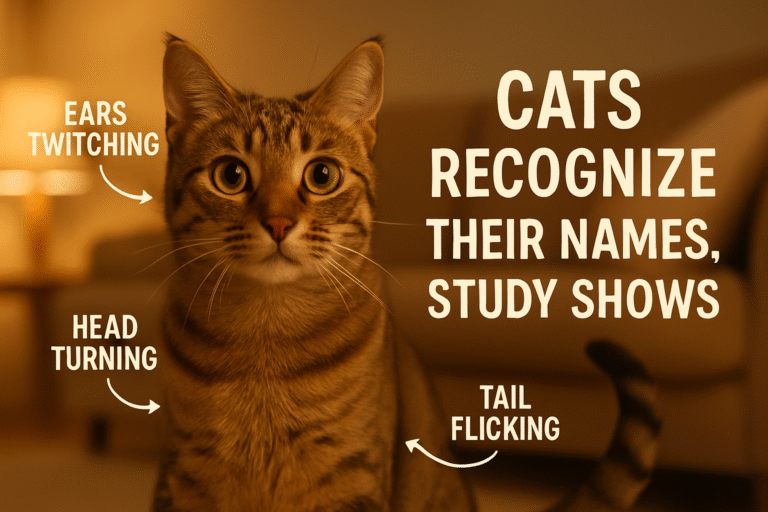Keeping your dog physically healthy is essential—but did you know that mental stimulation is just as important for their well-being? If you’re wondering how to mentally stimulate my dog at home, you’re already on the right track toward being a responsible and thoughtful pet parent. Mental stimulation helps prevent boredom, reduces behavioral problems, and enhances your dog’s emotional health.
Table of Contents
ToggleIn this comprehensive guide, we’ll explore creative, science-backed, and effective ways to mentally engage your furry friend indoors. Whether you live in a small apartment or have a spacious home, there’s something here for every pet parent.

Why Mental Stimulation is Crucial for Dogs
Just like humans, dogs require a balance of physical and cognitive activity. While long walks and games of fetch are great, they don’t always challenge your dog’s brain. Without proper mental enrichment, your dog may exhibit destructive behaviors such as:
- Excessive barking
- Chewing on furniture
- Digging
- Escaping or roaming
- Anxiety or depression
Mentally stimulating activities act as brain exercises for dogs, enhancing their problem-solving skills, memory, and even obedience.
Key Facts
- Program Name: Brain Training for Dogs
- Creator: Adrienne Farricelli (Certified CPDT-KA Dog Trainer)
- Focus: Dog behavior training using positive reinforcement dog training
- Format: Digital eBook, Video Tutorials, Printable Games
- Price: One-time fee, no subscriptions
Unlock Your Dog's Hidden Intelligence with Brain Training for Dogs
Signs Your Dog Needs More Mental Stimulation
Before we dive into how to mentally stimulate your dog at home, it’s important to recognize the signs that your dog might be mentally under-stimulated:
- Restlessness or pacing
- Chewing inappropriate items
- Whining or barking excessively
- Seeming uninterested in toys
- Lack of focus during training
If your dog displays one or more of these signs, it’s time to introduce some mentally engaging routines.
1. Puzzle Toys and Interactive Feeders
Puzzle toys are among the best tools to challenge your dog’s mind. These toys encourage your dog to solve problems to access treats or kibble.
Best Puzzle Toys:
- KONG Classic Toy (stuffed with peanut butter or kibble)
- Nina Ottosson Puzzle Games
- Snuffle mats to encourage foraging instincts
These tools not only make mealtime fun but also satisfy their natural curiosity.
Unlock Your Dog's Hidden Intelligence with Brain Training for Dogs
2. DIY Homemade Puzzle Games
If you’re on a budget or want to experiment, try making DIY dog puzzles using household items. Here are a few ideas:
- Towel Roll-Up: Hide treats in a towel and roll it up. Let your dog unroll it to discover treats.
- Muffin Tin Game: Place treats in a muffin tin and cover each with tennis balls. Your dog will have to remove the balls to find the treats.
- Box Challenge: Place smaller boxes inside a larger box and hide treats inside one of them.
These homemade games teach your dog how to think critically, solve problems, and stay busy.
3. Rotate Toys Regularly
Just like kids, dogs can get bored with the same old toys. To keep them interested:
- Rotate toys every few days.
- Hide some toys and reintroduce them later.
- Associate toys with specific activities or training commands.
This creates novelty and keeps their attention sharp.
Unlock Your Dog's Hidden Intelligence with Brain Training for Dogs
4. Teach New Tricks and Commands
Training isn’t just for puppies. Dogs of all ages benefit from learning new things. Whether it’s sit, roll over, or more complex commands like fetch the newspaper, training provides incredible mental stimulation.
Ideas to Try:
- Learn the names of toys (“Find your ball!”)
- Teach object sorting (yes, really!)
- Introduce scent work or scent discrimination
Training sessions also strengthen the bond between you and your dog, offering mutual trust and understanding.v
5. Use Scent Games to Challenge Their Nose
Dogs have an exceptional sense of smell. Engaging their nose is one of the best ways to stimulate their brain. Here’s how to mentally stimulate your dog at home using scent games:
Try These:
- Hide-and-Seek with Treats: Hide treats around the room and let your dog sniff them out.
- Which Hand?: Hide a treat in one of your hands and let your dog guess.
- Scent Trails: Drag a treat along the ground and let your dog follow the trail.
Nose work taps into your dog’s natural hunting instincts and tires them out faster than a long walk.
6. Play the "Shell Game"
This is a classic dog brain game that builds problem-solving skills.
How to Play:
- Use three identical cups and a small treat.
- Show your dog the treat, place it under one cup, and shuffle them.
- Let your dog indicate which cup hides the treat.
It’s a simple but powerful game that engages attention, memory, and smell.
7. Engage in Short, Fun Obedience Drills
Obedience doesn’t have to be a chore. Turn it into a fun, engaging routine using short drills:
- Use a clicker or treat-based reward system
- Practice in different rooms or with distractions
- Introduce agility or tricks like jumping through hoops or weaving through cones
Just 10-15 minutes a day can make a significant difference in your dog’s mental health.
8. Give Your Dog a “Job”
Many breeds are working dogs by nature. Giving them a “job” to do can be incredibly fulfilling.
Simple Jobs at Home:
- Carrying the mail from the door to the table
- Cleaning up toys (use “clean up” command)
- Wearing a doggy backpack during indoor walks
These tasks simulate working roles and help your dog feel purposeful.
9. Arrange Dog-Friendly TV or Audiobooks
Many dogs find stimulation through sound and visuals. Try leaving on:
- Dog TV (YouTube channels designed for pets)
- Audiobooks (research shows dogs prefer calm narration)
- Calming music or nature sounds
Though passive, it still provides a gentle mental distraction when you’re not around.
10. Interactive Feeding Routines
Instead of just placing food in a bowl, turn meals into challenges. Here’s how to mentally stimulate your dog at home during feeding:
- Use slow feeders or food-dispensing toys
- Scatter feed dry kibble in the backyard or on a snuffle mat
- Create treat trails with increasing complexity
This replicates the natural “hunt and forage” instinct of dogs, which is deeply satisfying.
11. Encourage Socialization (Even at Home)
Social interaction is crucial—even at home. Invite a friend’s well-behaved dog over or allow your dog to observe passersby from a window.
Virtual Socialization:
- Facetime with family members
- Use interactive pet cameras that allow two-way talking
Dogs are social animals; a little interaction can go a long way in alleviating boredom.
12. Introduce Novel Smells and Textures
Keep things fresh by exposing your dog to new smells, sounds, and textures:
- Let them explore new rooms or closets
- Introduce toys made of different materials (wood, rubber, plush)
- Use essential oil-spritzed cloths (like lavender, safe for dogs)
These new sensations ignite your dog’s curiosity and problem-solving skills.
13. Build a DIY Indoor Agility Course
No backyard? No problem. Create a makeshift obstacle course indoors:
- Use chairs and broomsticks for jumps
- Hula hoops as tunnels or tires
- Couch cushions for crawling or balance
This kind of structured play keeps your dog engaged and mentally sharp.
14. Provide Window Watching Opportunities
Dogs love to watch the world go by. Set up a perch near a window so they can observe:
- People walking dogs
- Birds flying
- Cars passing by
Pair this with occasional treats or training sessions, and your dog gets both stimulation and reinforcement.
15. Use Smart Pet Gadgets
In today’s tech-savvy world, there are many interactive smart toys and gadgets:
- Pet cameras with treat dispensers
- Remote-controlled ball launchers
- Puzzle boards with built-in sensors
These devices make it easy to keep your dog entertained even when you’re busy or at work.
Final Thoughts
If you’ve been searching for how to mentally stimulate my dog at home, now you know it’s entirely possible—and fun! Whether it’s puzzle toys, training sessions, scent work, or creative feeding routines, mental enrichment is just as important as physical exercise for your dog’s overall well-being.
Integrating just a few of these strategies into your routine can lead to a happier, more balanced, and emotionally satisfied pup. Mental stimulation builds confidence, deepens your bond, and helps prevent behavior problems caused by boredom and frustration.
So the next time your dog is zooming around the living room or chewing up a slipper, consider it a sign—not of mischief—but of a brilliant brain looking for something to do. Give them that outlet, and you’ll both reap the rewards.
Frequently Asked Questions (FAQs)
1. Why is mental stimulation important for dogs?
Mental stimulation helps keep your dog’s brain active and engaged. It prevents boredom, reduces anxiety, curbs destructive behaviors, and promotes better overall behavior and emotional health.
2. What are signs that my dog is bored or under-stimulated?
Common signs include excessive barking, chewing furniture, digging, restlessness, pacing, and a general lack of interest in toys or commands. These behaviors suggest your dog needs more mental enrichment.
3. How can I mentally stimulate my dog indoors?
You can use puzzle toys, scent games, new trick training, DIY games, and interactive feeders. Even simple things like rotating toys or playing hide-and-seek with treats work wonders for mental engagement.
4. Are puzzle toys really effective for dogs?
Yes! Puzzle toys challenge your dog’s brain by encouraging problem-solving and focus. They also make mealtime more fun and reduce fast eating, which improves digestion.
5. Can I mentally stimulate my dog without buying new toys?
Absolutely. You can create DIY games using household items like towels, muffin tins, cardboard boxes, or hiding treats around your home. Teaching new commands is also free and highly effective.
6. How often should I give my dog mental stimulation?
Ideally, aim for at least 15–30 minutes daily. This can be broken into small sessions throughout the day. The more mentally stimulating activities you offer, the less likely your dog is to act out due to boredom.
7. What are good brain games for dogs?
Popular brain games include:
- Hide-and-seek with treats or toys
- The shell game
- Scent trails
- Find the object
- Clean-up games (teaching your dog to put toys away)
8. Do older dogs need mental stimulation too?
Yes, and it’s even more important as they age. Mental activities help maintain cognitive function in senior dogs and can delay the onset of canine dementia.
9. How do I keep my dog entertained while I’m at work?
Use smart pet cameras, automatic treat dispensers, snuffle mats, or safe interactive toys. Leaving the radio, audiobooks, or dog-friendly TV on can also provide passive stimulation.
10. Can mental stimulation replace physical exercise?
No. Mental and physical activities serve different purposes. However, combining both gives your dog a well-rounded lifestyle. A mentally tired dog is often more content than one who’s just physically exhausted.
Recent Posts









Related Topics
Copyright © 2025 The Pet Blog – Expert Tips, Care Guides & Fun Facts for Every Pet Lover.


